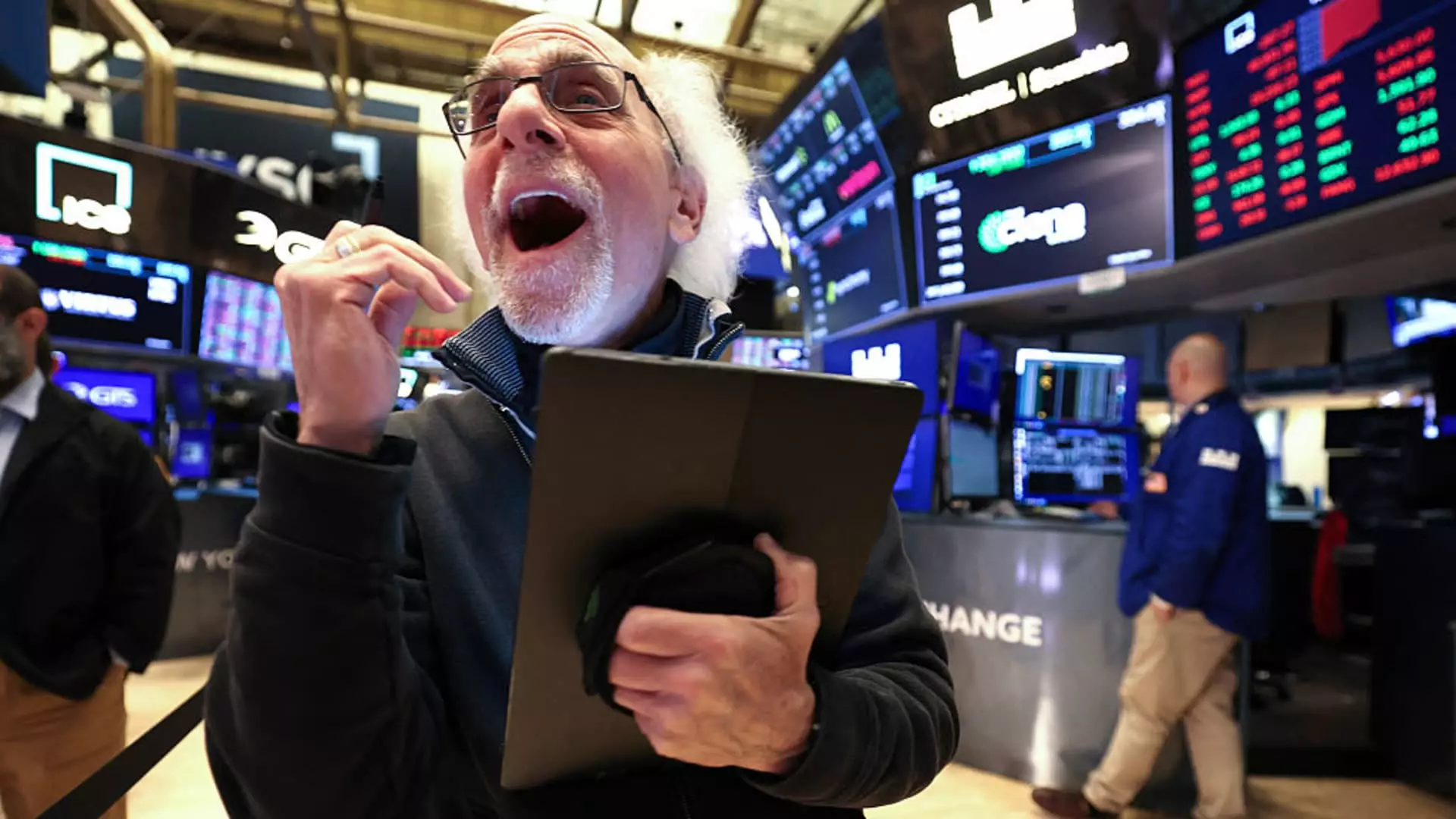The recent rally in the U.S. stock market, with the S&P 500 and Nasdaq Composite hitting unprecedented highs, might seem like a validation of economic resilience and investor optimism. Yet, beneath this façade lies a complex patchwork of uncertainty, risk, and structural fragility that calls into question the sustainability of this surge. While headlines trumpet record-breaking numbers and celebrate the comeback after a chaotic spring, this rebound may be more of an exuberant sprint than a steady marathon—a market racing on hope and momentum rather than solid fundamentals.
Considering the political backdrop and global tensions that persist, it’s somewhat startling that equities have surged over 24% from their April low. The promise of a “generative AI trade” and defense stock rallies have fueled these gains, emboldening investors to overlook the broader economic and geopolitical fault lines. This brief euphoria is hardly a bulletproof hallmark of sustained prosperity; instead, it serves as a reminder of how markets can detach from reality, especially when driven by hype around buzzwords or temporary safe havens.
Artificial Intelligence: The Double-Edged Sword of Market Hype
The undeniable rise of AI and semiconductor companies like Nvidia and Broadcom has been a crucial driver of the recent market highs. However, this hyper-focus on AI—celebrated as the next industrial revolution—risks creating a dangerously narrow investment narrative. When Nvidia’s market capitalization balloons to $3.8 trillion on the back of promised AI chip demand, it signals a tech bubble more than sustainable growth. The deal with Saudi Arabia’s startup Humain, touted as a monumental breakthrough, further exemplifies how geopolitical interests intertwine with tech ambitions, sometimes blurring lines between profit and strategic influence.
This AI fervor often overshadows the looming risks of regulatory clampdowns, supply chain vulnerabilities, and escalating U.S.-China tensions that could choke semiconductor production. In addition, the environmental costs of powering massive data centers—obscured by the glossy success stories—pose long-term sustainability challenges. Placing excessive faith in AI stocks risks feeding into speculative mania, which historically has ended in sharp corrections that disproportionately hurt everyday investors and shake confidence in technological progress.
Defense and Cybersecurity: Safe Havens or Frontier Gamble?
The renewed investor interest in defense and cybersecurity stocks, including CrowdStrike and Palo Alto Networks, reflects how geopolitical anxieties shape financial behavior. While it is rational to seek refuge in companies that protect against virtual warfare and state-sponsored cyberattacks, this trend is tinged with an unsettling paradox: investing in conflict-driven sectors profits from global instability. Betting on defense equities as “safe havens” may actually reinforce a cycle where market winners thrive because international tensions persist or worsen.
Moreover, cybersecurity’s prominence underscores a digital arms race that is neither benign nor guaranteed to be profitable indefinitely. Emerging technologies can be disrupted by rapid innovation, regulatory challenges, or shifting political alliances. The near-record valuations of these stocks raise the question: Are investors valuing true intrinsic strength, or merely capitalizing on fears of escalating threats that may yet be contained or resolved?
The Fragility Beneath Economic Resilience
Federal Reserve Chair Jerome Powell’s remarks about a “still solid” U.S. economy paint a somewhat optimistic picture, but one must approach this with cautious skepticism. The Fed’s stance—“well positioned to wait” before adjusting interest rates—reflects uncertainty as much as confidence. At a time when inflationary pressures continue to linger and global supply chains remain vulnerable, the “resilience” touted may fail to account for underlying vulnerabilities, including income inequality, debt levels, and a consumer base potentially stretched thin.
Goldman Sachs’ record-high because of its investment banking involvement in IPOs like Chime and eToro might suggest healthy capital markets, yet IPO booms frequently emerge during speculative cycles, only to falter later, reducing investor wealth and shaking market confidence. Similarly, Capital One’s climb after acquiring Discover projects a positive image but also exposes the credit sector to risks tied to consumer debt dynamics and macroeconomic fluctuations.
The fact that stocks are hitting new highs while significant sources of uncertainty persist is indicative not of a confident economy but of market participants willing to gamble that current headwinds won’t culminate in shocks. This speculative optimism can evaporate quickly, especially when policy shifts, trade tensions, or geopolitical conflicts resurface.
A Cautionary Note on Market Narratives and Investor Behavior
Ultimately, the celebration around these record-setting levels in the stock market obscures a more unsettling reality: markets today are as much a reflection of narrative-driven speculation as they are of genuine economic progress. The emphasis on AI, defense, and financial services as winning sectors reveals a narrow band of optimism, reliant on the continuation of current trends and the avoidance of disruptive shocks.
Investors and policymakers alike should resist the temptation to interpret these milestones as unequivocal signs of health. Instead, they must scrutinize the fragile interplays beneath—political risks, fragile economic underpinnings, and the social costs of an economy increasingly driven by speculation and concentration in a few sectors.
The market’s recent highs are not a guaranteed prelude to long-term prosperity; they are, rather, an invitation to vigilance and sober analysis amid a perfect storm of promise and peril. Only those who recognize this complexity will navigate the coming months with both hope and a prudent dose of realism.

